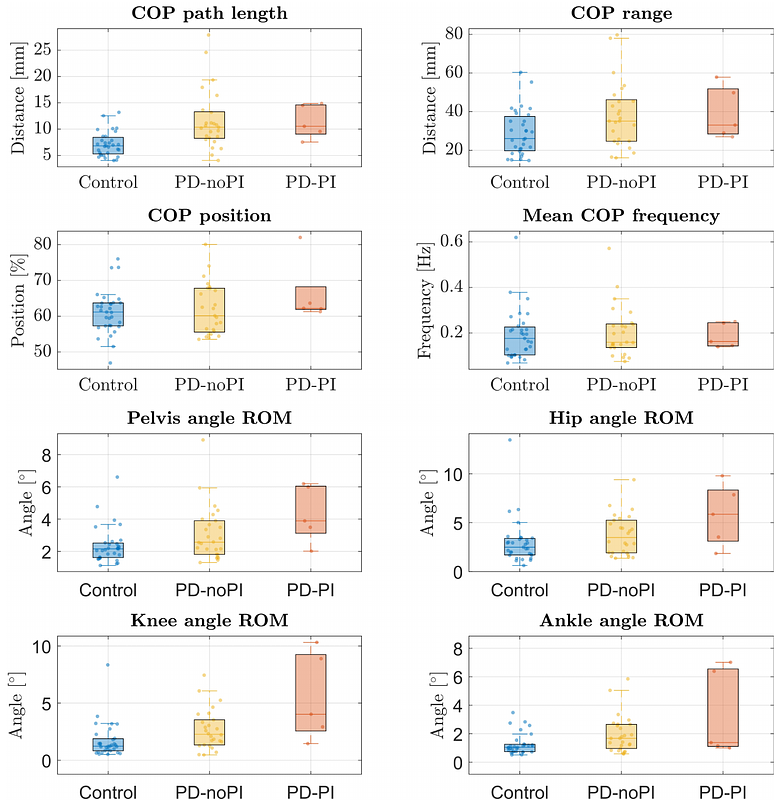Does reduced reactivity explain altered postural control in Parkinson's disease? A predictive simulation study.

Does reduced reactivity explain altered postural control in Parkinson's disease? A predictive simulation study.
Shanbhag, J.; Fleischmann, S.; Wechsler, I.; Gassner, H.; Winkler, J.; Eskofier, B. M.; Koelewijn, A. D.; Wartzack, S.; Miehling, J.
AbstractPostural instability represents one of the cardinal symptoms of Parkinson\'s disease (PD). Still, internal processes leading to this instability are not fully understood. Simulations using neuromusculoskeletal human models could help understand these internal processes leading to PD-associated postural deficits. In this paper, we investigated whether reduced reactivity amplitudes resulting from impairments due to PD can explain postural instability as well as increased muscle tone as often observed in individuals with PD. To simulate reduced reactivity, we gradually decreased previously optimized gain factors within the postural control circuitry of our model performing a quiet upright standing task. After each reduction step, the model was again optimized. Simulation results were compared to experimental data collected from 31 individuals with PD and 31 age- and sex-matched healthy control participants. Analyzing our simulation results, we showed that muscle activations increased with a model\'s reduced reactivity, as well as joint angles\' ranges of motion (ROMs). However, sway parameters such as center of pressure (COP) path lengths and COP ranges did not increase as observed in our experimental data. These results suggest that a reduced reactivity does not directly lead to increased sway parameters, but could cause increased muscle tone leading to subsequent postural control alterations. To further investigate postural stability using neuromusculoskeletal models, analyzing additional internal model parameters and tasks such as perturbed upright standing requiring comparable reaction patterns could provide promising results. By enhancing such models and deepening the understanding of internal processes of postural control, these models may be used to assess and evaluate rehabilitation interventions in the future.